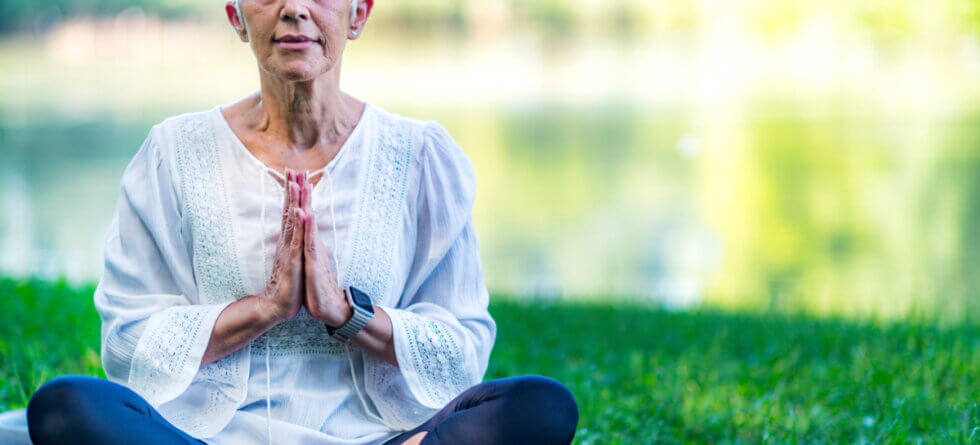In the golden years of life, finding peace and tranquility can significantly enhance well-being. Mindfulness and meditation emerge as powerful tools for seniors seeking a serene state of mind. This practice, rooted in ancient traditions, is surprisingly accessible and highly beneficial for the mature population. This article unfolds simple, yet impactful meditation techniques tailored for seniors, designed to nurture both mind and body.
Understanding Mindfulness and Its Importance
Mindfulness is the practice of being fully present and engaged at the moment, aware of our thoughts and feelings without judgment. For seniors, this practice offers a path to alleviate stress, manage pain, improve cognitive function, and foster a deeper connection to the world around them. Engaging in mindfulness can transform the golden years into a period of renewal and growth.
Beginning the Journey: Simple Meditation Techniques
- Focused Breathing – One of the easiest ways to embark on the path of meditation is through focused breathing. This technique involves sitting comfortably, closing your eyes, and paying attention to breathing. Inhale slowly through the nose, hold for a moment, and exhale gently through the mouth. This process of concentrating on each breath helps clear the mind and invites calmness.
- Guided Imagery – Guided imagery involves visualizing a serene setting, such as a quiet beach or a lush forest, while deep in relaxation. Seniors can either attend guided sessions or listen to recordings where an instructor leads them through vivid landscapes. This technique not only promotes relaxation but also enhances emotional well-being by connecting individuals to their inner peace.
- Body Scan Meditation – Body scan meditation encourages individuals to focus attention on different parts of the body. Starting from the toes and moving upwards to the top of the head, this practice involves noticing sensations without judgment. It’s a way of connecting with the body, acknowledging discomfort or tension, and promoting relaxation.
- Loving-Kindness Meditation – This meditation fosters a sense of compassion and love towards oneself and others. Seniors can practice loving-kindness by sitting in a quiet spot, focusing on their breath, and repeating positive phrases or mantras internally. This method nurtures positive emotions, reduces feelings of loneliness, and builds a sense of connectedness.
- Mindful Walking – Not all meditation requires sitting still. Mindful walking is an excellent alternative for seniors who prefer movement. It involves walking at a slow pace and noticing each step, the movement of the body, and the surrounding environment. This form of meditation can be particularly enriching when done in nature.
Tailoring Meditation to Senior Needs
While meditation offers numerous benefits, it’s important to adapt the practice to suit the physical and cognitive abilities of seniors. Here are a few tips to ensure mindful practices are both safe and enjoyable:
- Start slowly: Begin with short sessions (5-10 minutes) and gradually increase the duration.
- Prioritize comfort: Use cushions, and chairs, or even lie down if sitting for long periods is challenging.
- Utilize technology: Apps and online videos specifically designed for seniors can guide through various techniques.
- Join a group: Participating in community classes can offer support, motivation, and social interaction.
Health Benefits of Meditation for Seniors
Engaging in regular meditation has profound health benefits for seniors. Scientific studies have shown that mindfulness can:
- Enhance cognitive function: Regular practice improves memory, attention, and processing speed.
- Reduce stress and anxiety: Meditation lowers levels of the stress hormone cortisol, promoting relaxation.
- Improve sleep quality: Mindfulness practices can help combat insomnia and lead to deeper, more restful sleep.
- Manage pain: Focused attention and relaxation techniques can alter the perception of pain and improve coping mechanisms.
- Boost mood: Meditation has been linked to increased serotonin levels, which can alleviate feelings of depression.
Fostering a Mindful Lifestyle Beyond Meditation
Incorporating mindfulness into daily life can magnify its benefits. Seniors can practice mindful eating by savoring their meals or engage in mindful conversation by listening intently without judgment. These everyday acts of mindfulness enrich experiences and foster a greater appreciation of life’s simple pleasures.
Overcoming Challenges and Embracing Mindfulness
Adopting a new practice can come with its hurdles, from initial discomfort to skepticism about its benefits. Overcoming these challenges involves patience, persistence, and openness to experience. Encouragement from caregivers, family, and friends can also play a significant role in embracing mindfulness.
Conclusion
Mindfulness and meditation offer a gateway to a more peaceful, fulfilling life for seniors. By embracing simple meditation techniques, such as focused breathing, guided imagery, and mindful walking, seniors can improve their mental, emotional, and physical well-being. Tailoring the practice to individual needs ensures accessibility and enjoyment of meditation’s profound benefits. As seniors journey through their golden years, mindfulness stands out as a beacon of tranquility, illuminating the path to a serene and vibrant life.




